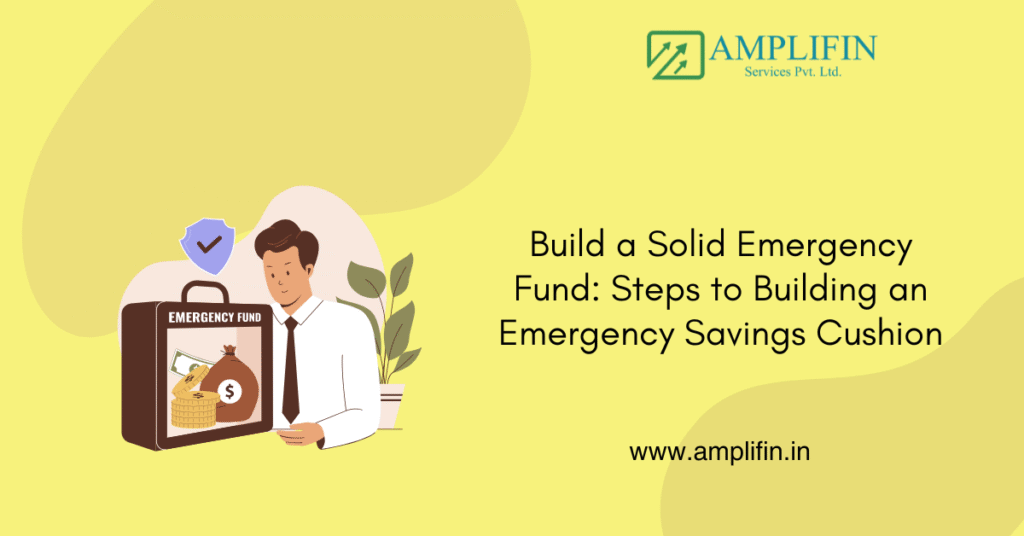
When life throws an emergency at you, the last thing you want is to scramble for money. That’s why an emergency fund is one of the most important parts of a strong financial plan. An emergency savings fund acts as a financial cushion, protecting you from unexpected expense events like job loss, medical emergencies, or urgent home repair. This guide will walk you through the steps to build and maintain a reliable fund, so you can achieve lasting financial security and peace of mind.
Outline
- What Is an Emergency Fund and Why Do You Need One?
- How Much Should You Set Aside in an Emergency Fund?
- Why Is the Importance of an Emergency Fund Growing Today?
- Where Should You Keep Your Emergency Fund—Savings Account or Investments?
- What Steps to Build Your Emergency Fund Should You Take First?
- How Can an Emergency Fund Help During Job Loss or Medical Emergencies?
- What’s the Right Way to Use Your Emergency Fund in Case of an Emergency?
- Should You Rely on Credit Cards or Loans Instead of an Emergency Fund?
- How to Automate Your Savings and Build a Solid Emergency Fund Over Time
- How Does Maintaining an Emergency Fund Support Long-Term Financial Goals?
1. What Is an Emergency Fund and Why Do You Need One?
An emergency fund is a dedicated pool of emergency money you set aside for situations that could derail your financial stability. It’s a financial safety net designed to cover expenses or financial emergencies without disrupting your financial commitments.
The need an emergency fund arises because life is unpredictable. From sudden car breakdowns to medical emergencies, these unexpected financial situations can cause financial stress. With a separate savings account for emergencies, you can cover costs without dipping into other fund investments or relying on credit cards.
An emergency fund acts as a safety net—it allows you to meet financial needs without taking on debt. This way, your financial future stays protected even when surprises occur.
2. How Much Should You Set Aside in an Emergency Fund?
Experts recommend you save enough to cover three to six months of living expenses. This savings goal ensures your emergency savings fund can handle most crises, including sudden job loss.
The right size of your emergency fund depends on personal circumstances. For some, three to six months’ worth is enough to cover essential bills. Others may need a larger fund if they have dependents, irregular income, or higher financial needs.
Think of your fund as a financial buffer. When built properly, it ensures you can manage unexpected financial issues while keeping your financial goals intact.
3. Why Is the Importance of an Emergency Fund Growing Today?
The importance of an emergency fund has increased in today’s world of uncertainty. Economic downturns, layoffs, and health crises have shown how vulnerable people are without a solid emergency fund.
Having money set aside gives you peace of mind. An emergency fund helps you feel in control of your overall financial life. It also provides the financial cushion to pursue long-term dreams, because you know your financial safety net is ready.
In short, an emergency fund ensures you stay steady even when life becomes shaky.
4. Where Should You Keep Your Emergency Fund—Savings Account or Investments?
When deciding where to store your emergency, prioritize accessibility and safety. The best place is often a separate savings account that is easily accessible when needed.
Some also consider low-risk investment options like a liquid mutual fund. These can give slightly better returns while still allowing quick withdrawal. But don’t confuse your emergency fund savings with other fund investments—your priority should be liquidity and safety, not returns.
The goal is to keep it safe. An account to your emergency fund should not be linked to risky assets. The fund ensures you can handle emergencies without relying on debt.
5. What Steps to Build Your Emergency Fund Should You Take First?
The first steps to building an emergency fund involve creating a simple financial plan. Decide your savings goal, then break it into achievable milestones.
Many people struggle to start saving, but the key is to start small. Even a small amount you set aside each month adds up. Automate your savings if possible—this way you don’t have to think about it. Over time, your fund over time grows into a reliable emergency fund.
Remember: learning how to build an emergency fund is not about speed, but about consistency.
6. How Can an Emergency Fund Help During Job Loss or Medical Emergencies?
A strong emergency fund can help during crises like job loss or medical emergencies. Without it, you may be forced to rely on credit cards or take on loans.
Your fund ensures you can cover expenses without derailing your financial life. In the event of sudden job loss, the fund acts as a financial buffer until you find work again. Similarly, in medical emergencies, the fund helps you pay bills without financial disruption.
This way, the fund acts as a financial safety net, reducing financial stress during life’s most difficult times.
7. What’s the Right Way to Use Your Emergency Fund in Case of an Emergency?
It’s important to use your emergency fund only for genuine emergencies. Examples include a home repair, medical emergencies, or unexpected travel for family crises.
Avoid tapping into it for regular spending. The fund helps you preserve your financial cushion for when you truly need it. Always remember: the emergency fund gives you strength in critical times, so use it wisely.
Once you’ve spent from it, prioritize replenishing it to ensure your maintaining an emergency fund strategy remains intact.
8. Should You Rely on Credit Cards or Loans Instead of an Emergency Fund?
Some people ask: why not just use credit cards or loans in an emergency? The answer is simple: debt increases financial stress.
An emergency fund ensures you can cover financial emergencies without relying on borrowing. This means you won’t pay high interest or risk falling into a debt trap.
Your emergency savings fund lets you meet financial needs immediately while keeping your financial future secure. That’s something no loan can guarantee.
9. How to Automate Your Savings and Build a Solid Emergency Fund Over Time
One of the best ways to help you build a solid emergency fund is to automate your savings. By directing money toward your emergency fund right after payday, you eliminate excuses.
This approach ensures your fund acts consistently as a growing financial cushion. Over time, your fund investments will remain untouched because your emergency fund becomes your first line of defense.
Automation also makes it easier to start today and continue building a fund over time, ensuring your long-term financial health.
10. How Does Maintaining an Emergency Fund Support Long-Term Financial Goals?
Building an emergency fund requires discipline, but the payoff is huge for your financial future. By maintaining a reliable emergency fund, you protect yourself from setbacks while staying on track for your financial goals.
Your fund ensures you can save and invest without disrupting your financial journey. It also gives you the freedom to pursue fund investments for growth, knowing your emergency savings is ready for any storm.
In the end, your emergency fund gives you not just a financial cushion, but also the peace of mind to live life without constant worry.
Key Takeaways: Why an Emergency Fund Is Essential
- An emergency fund is one of the most important parts of any financial plan.
- Save enough to cover three to six months’ worth of living expenses.
- Keep it in a separate savings account or a liquid mutual fund to keep it safe and easily accessible.
- Start small, automate contributions, and start today to build a financial safety net.
- Use the fund only for true emergencies like medical emergencies, job loss, or urgent home repair.
- An emergency fund ensures you can handle unexpected financial shocks without relying on debt.
- A solid emergency fund supports your long-term financial stability and reduces financial stress.
